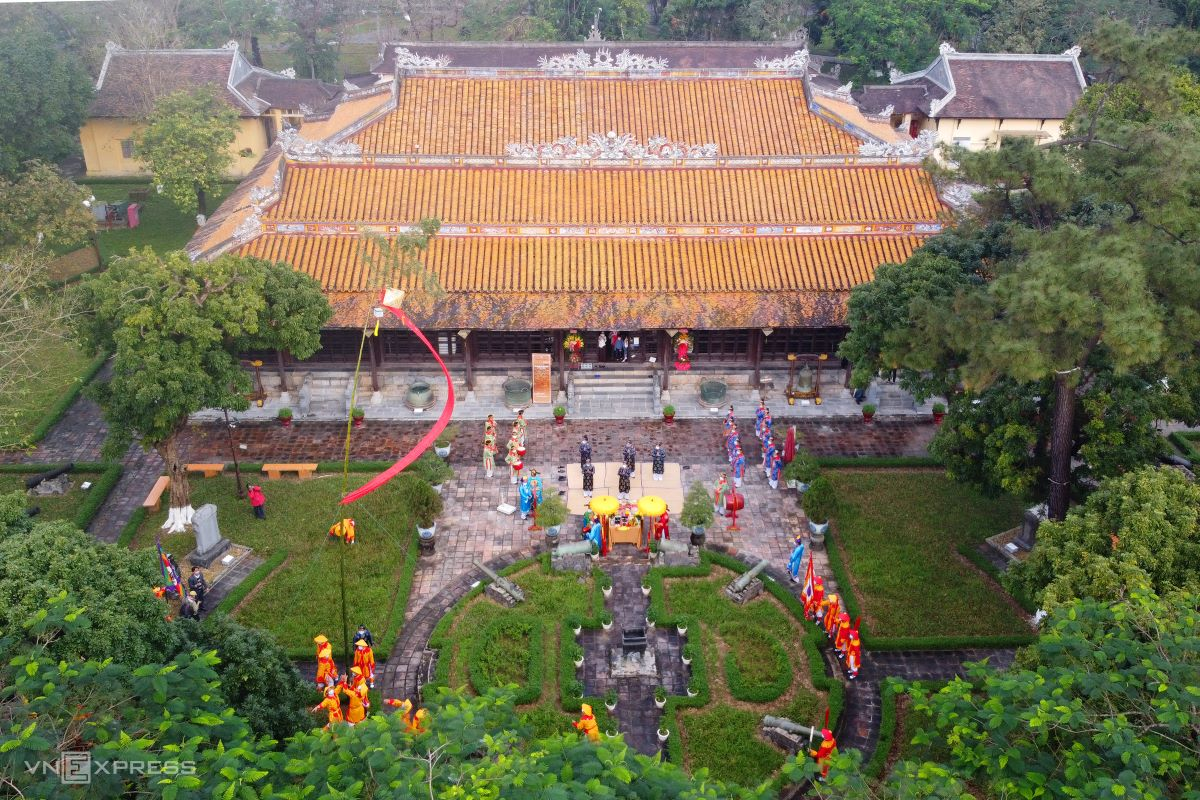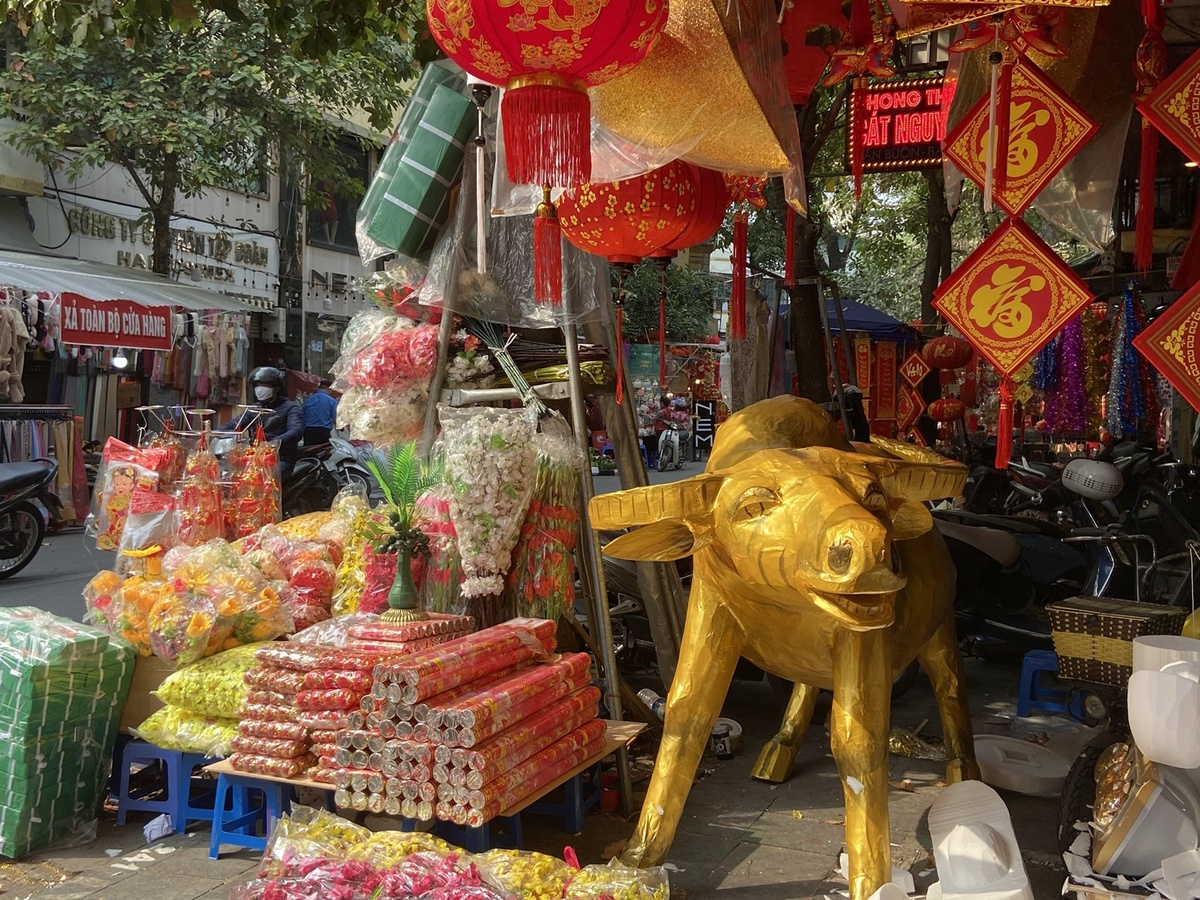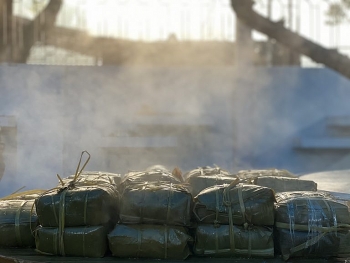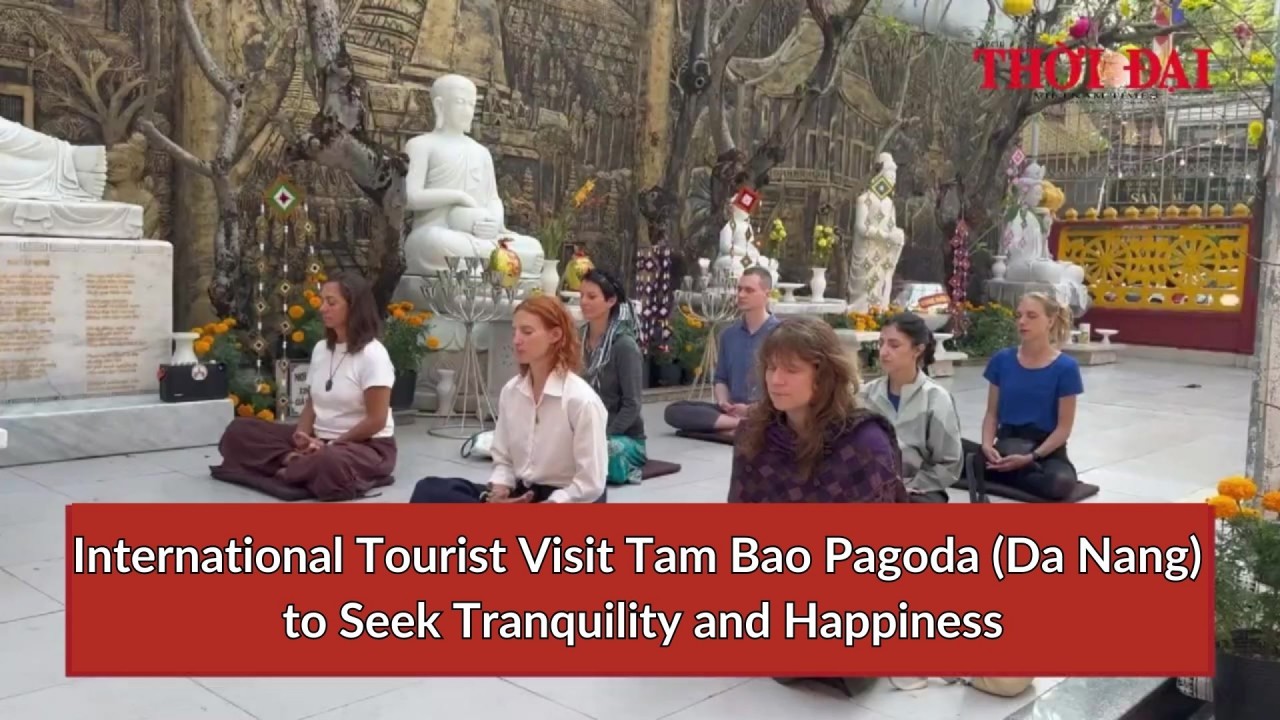Foreigners celebrate Tet holiday in Vietnam
| Bamboo pole erecting tradition in Hue Citadel to celebrate Tet | |
| Hanoi's Old Quarter gets ready for traditional Tet holiday | |
| Far from home, Vietnamese people welcome Lunar New Year |
Most of the foreigners who were interviewed by Bao Thanh Nien’s reporters say that they feel secure about Vietnam’s careful and precise COVID pandemic prevention measures. “In 2020, my career was deeply affected by the pandemic and our school closed so I had no income, but it’s a national problem. However, I feel safe living in Vietnam because of the cautious pandemic prevention measures, fast updated information and messages about coronavirus”, Lawrence Joseph, former journalist, said.
Compared to how other countries preventing coronavirus outbreak, Mr. Nagle said that citizens always wear masks in public, while a lot of people still refuse to follow social distancing rules in America. “As a person who used to witness SARS epidemic before, I always wear a mask, not only to keep myself safe from diseases, but also from air pollution”.
Despite the coronavirus complicated development, the foreigners’ life quality still remains stable.
“Our school still made sure to achieve the enrollment goal even though we had to close several times, and opened online classes to follow social distancing guide in 2020. I am grateful to live and work in Vietnam”, William P. Badger, Public Relation Officer of Concordia International School in Hanoi, told Bao Thanh Nien.
Joel, a Flipino teacher who taught English at District 7 (HCMC), says that he is grateful for the landlord who supported him financially by reducing the rent and the power company reduced the electric bills. “Filipinos, especially singers at the bars in HCMC, the COVID pandemic took a hard toll on them. However, Filipino Association in Vietnam have called for a donation from the Filipino community to help those in needs”, Joel said.
Normally, foreigners who work in HCMC will take their Tet holiday time to see their families back home. However, they decided to stay in Vietnam amid the new coronavirus outbreak.
“I canceled the trip back to Philipines. At first, I thought of taking my family for a trip to Phu Quoc Island but had to cancel the flight because of the new Covid outbreak in Hai Duong. We have our roommates sharing this Tet holiday with us is already heartwarming”, Joel added.
Many foreigners who only celebrated New Year’s Eve before. Ever since they arrived in Vietnam, they had a chance to breathe in the freshness of spring and Tet holiday atmosphere. “Tet Nguyen Dan is a special time for family gatherings after a hard-working year. I don’t have family here so I feel slightly down. Even though, the best thing is that I can enjoy Banh Chung, Banh Tet after one year waiting”, Nagle said.
Mr. Badger says he feels like he is “already a Vietnamese” and always celebrate the Tet holiday traditionally.
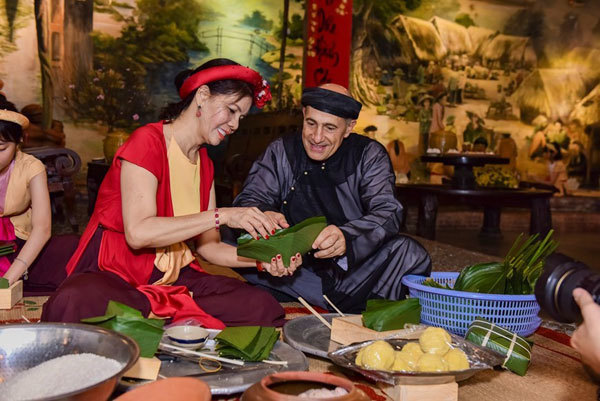 |
| Foreigners enjoy wrapping Banh chung, traditional cake of Vietnamesee people during Tet holiday. (Photo: Vietnamplus) |
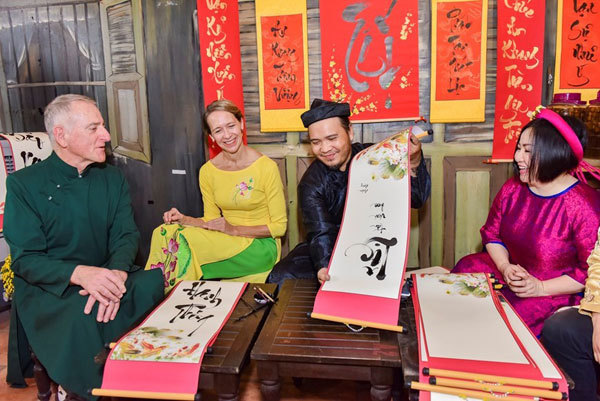 |
| Foreigners in Vietnamese traditional long dress experience Vietnamese traditional culture, including writing calligraphy, making “to he” traditional toys and singing Quan ho folk songs. (Photo: Vietnamplus) |
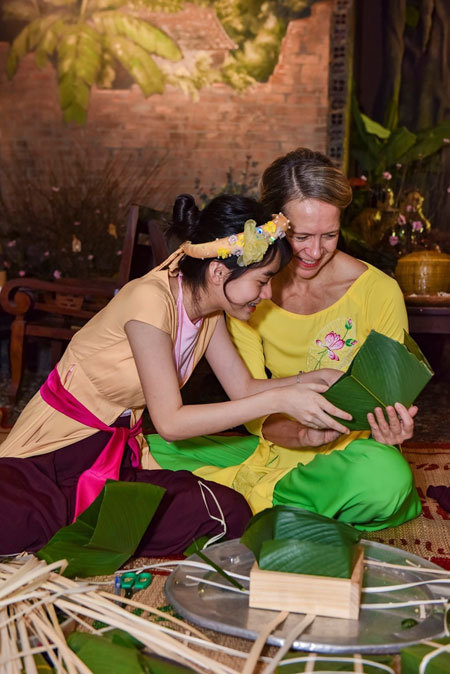 |
| A foreign visitor enjoys wrapping Banh chung, traditional cake of Vietnam's Lunar New Year holiday. (Photo: Vietnamplus) |
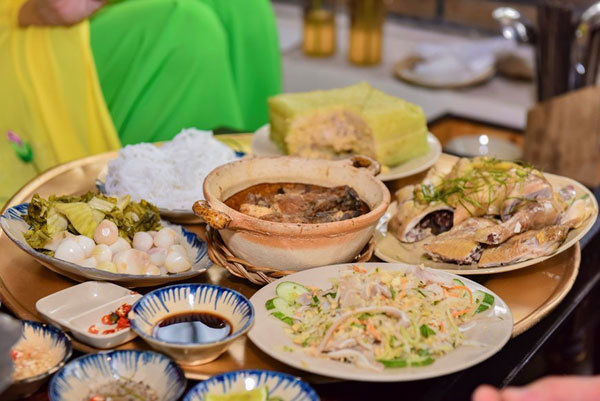 |
| Traditional food tray of Vietnamese people. (Photo: Vietnamplus) |
 |
| Foreigners enjoy wrapping Banh chung, traditional cake of Vietnamesee people during Tet holiday. (Photo: Vietnamplus) (Photo: Vietnamplus) |
Traditional Tet Holiday in Vietnam
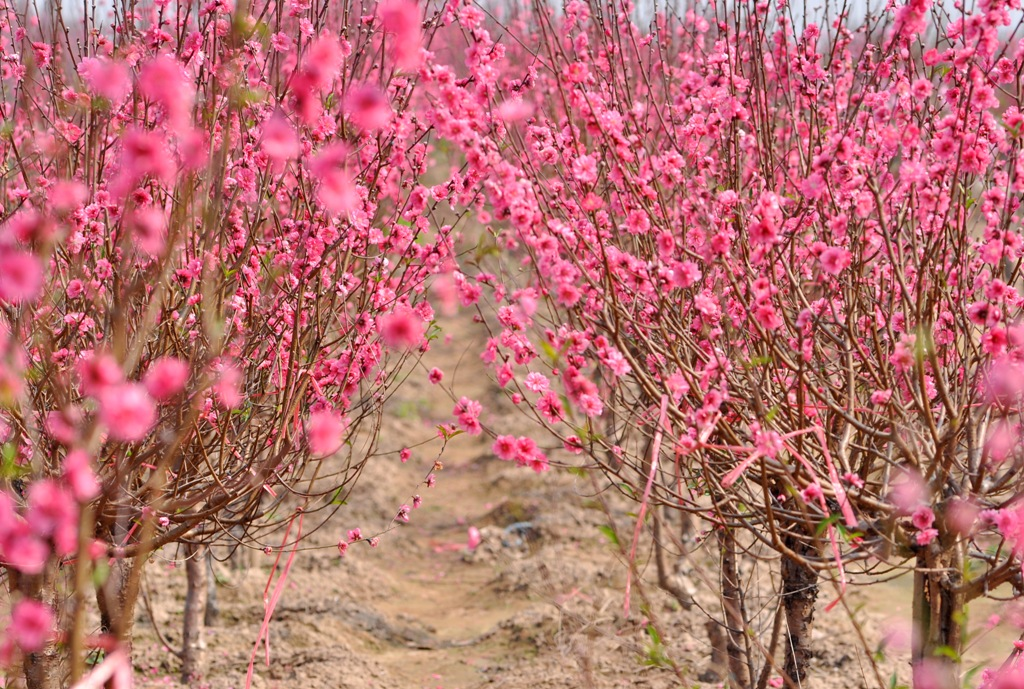 |
| Hoa Dao can be seen at Nhat Tan flower garden, is a symbol of Tet in the North (Photo: Student Exchange) |
Tết Nguyên Đán, more commonly known by its shortened name Tết, is the most important and popular holiday and festival in Vietnam. It is the Vietnamese New Year marking the arrival of spring based on the Lunar calendar. The name Tết Nguyên Đán is Sino-Vietnamese for Feast of the First Morning.
The dates of Lunar New Year differ every year but it generally takes place around late January or February. Because of the fact that Vietnamese families are so close-knitted, Tet Holiday is considered the best occassion for family members to return home and get together. During Tet, Vietnamese spend time shopping for the New Year, go to Pagodas and Temples. The items of shopping range from food to clothing to decorations for the house. The Vietnamese believe that Tet Holiday is an occasion to enjoy life after a full hard-working year, thus people forget their struggles and focus on making the celebration as festive as possible. Due to the high regard in which people hold it, Tết, as often as not, is consumed with unique, distinctive colors and flavors. Let’s take a look at some traditions and customs typical of this special holiday in Vietnam.
Food
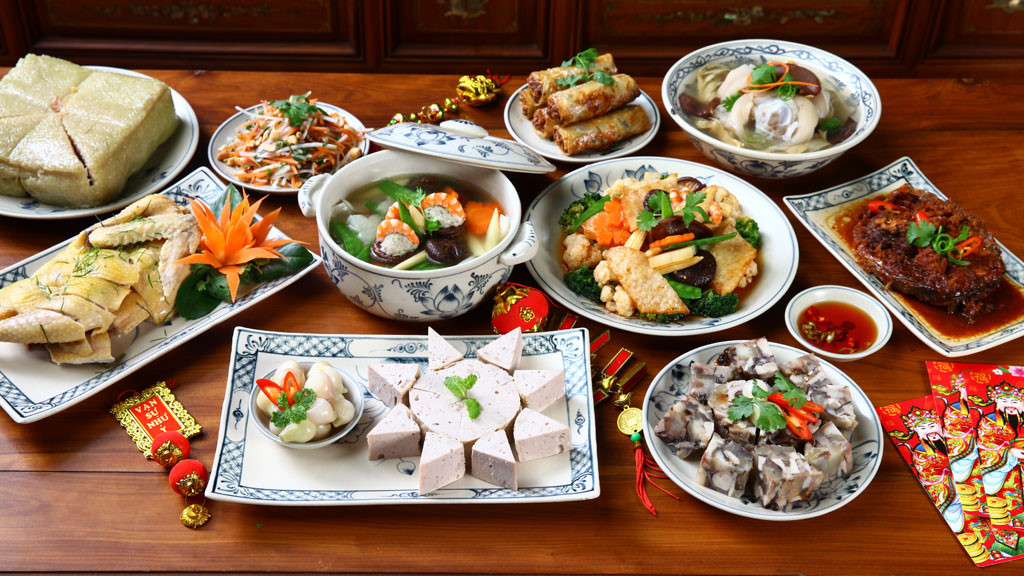 |
| A family meal during Tet Holiday Photo: Bao Thanh Nien |
Sticky square cake
Bánh Chung is a food made from glutinous rice, mung bean, and pork, added with many other ingredients. Bánh Chưng is covered by green leaves (usually banana leaves) and symbolizes the Earth, invented by the prince Lang Liêu from Hùng King dynasty. Besides traditional reasons, Bánh Chưng is chosen as the main food for the Tết holiday because it can last long for days in Vietnamese weather (Banh Chung can survive at room temperature for nearly 1 month).
Vietnamese sausage
Gio Cha (Vietnamese ham/sausage) is another traditional food in Tet holiday and usually served with Xôi (sticky rice) and Bánh Chưng. Giò is different from Chả since Gio is boiled and Cha is deep-fried. Cha is also made of lean pork and ingredients, but Chả is not wrapped by leaves and boiled but deep-fried in oil.
Braised Pork Belly with Duck Egg
This dish is more popularly enjoyed in the South than in the North, however, none can deny the irresistible aroma, flavor, and amazing compatibility of this dish with a bowl of steaming rice. The Pork Belly and Egg is cooked with coconut juice and fish sauce until it becomes tender and absorb all those amazing flavors. The dish is so universal and easy to make that it has become one of the most popular dishes served during the Tet Holiday.
Sticky rice
Xôi is also a very important part of the Tet holiday in Vietnam, along with Bánh Chưng, xôi is the main staple foods for Tết holiday. Xôi can be seen in many forms: Xoi Lac (sticky rice with peanuts), Xoi Do, Xanh (sticky rice with mung bean), Xôi Gấc (sticky rice with special “gấc” fruit). Among these types, xôi gấc is a favorite the most by people because of its special red color – symbolizes luck and new achievement for the New Year.
Jam
Mut Tet (Tet jam) is not a food to serve in a meal during Tet holiday, but more like a snack to welcome guests in this special period. This once-in-year mix of snacks is very large in variety, with so many tastes: ginger, carrot, coconut, pineapple, pumpkin, lotus seed, star fruit, etc.
Traditional customs
Even though many Vietnamese traditions are based on old cultural beliefs that may strike some as a little superstitious, families believe that their activities during Tết must involve happiness, joy, and good luck. Below are some of the popular, long-standing Tết traditional customs that have stood the test of time from generation to generation.
Lucky money
The first day of Tet is reserved for the nuclear family. Children receive a red envelope containing money from their elders. This tradition is called mừng tuổi (happy new age) in the north and lì xì in the south. Usually, children wear their new clothes and give their elders the traditional Tết greetings before receiving the money.
Xong Nha
Since the Vietnamese believe that the first visitor a family receives in the year determines their fortune for the entire year, people never enter any house on the first day without being invited first. The act of being the first person to enter a house on Tết is called "xông đất", "xông nhà" or "đạp đất", which is one of the most important rituals during Tet. According to Vietnamese tradition, if good things come to the family on the first day of the lunar New Year, the entire following year will also be full of blessings. Usually, a person of good temper, morality and success will be the lucky sign for the host family and be invited first into the house.
During subsequent days, people visit relatives and friends. Traditionally but not strictly, the second and even painting their home in anticipation of spring, settle old debts and disputes, and pledge to behave nicely and work hard in the new year.
Decorations
Traditionally, each family displays “Cay Neu”, an artificial New Year Tree consisting of a bamboo pole 5 to 6 m long. The top end is usually decorated with many objects, depending on the locality, including good luck charms, origami fish, cactus branches, etc.
At Tet every house is usually decorated by hoa mai – Ochna integerrima (in the central and southern parts of Vietnam) or hoa đào – peach flower (in the northern part of Vietnam) or hoa ban (in mountain areas). In the north or central, the kumquat tree is a popular decoration for the living room during Tết. Its bright orange-colored fruits represent the fertility and fruitfulness that the family hopes for in the coming year.
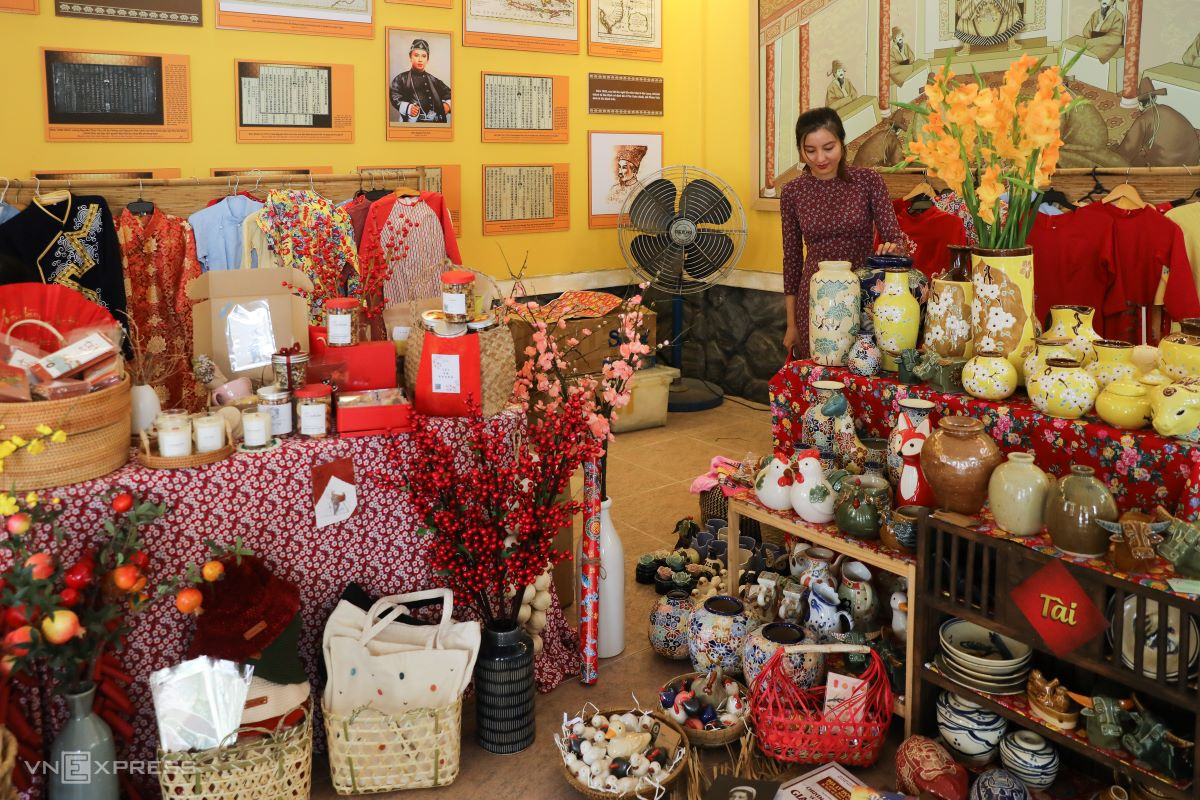 | Saigon Tet images of 100 years ago recreated On January 30, 'Dau An Saigon' - a special event organized by a group of young people, bringing back the memories of a beautiful traditional ... |
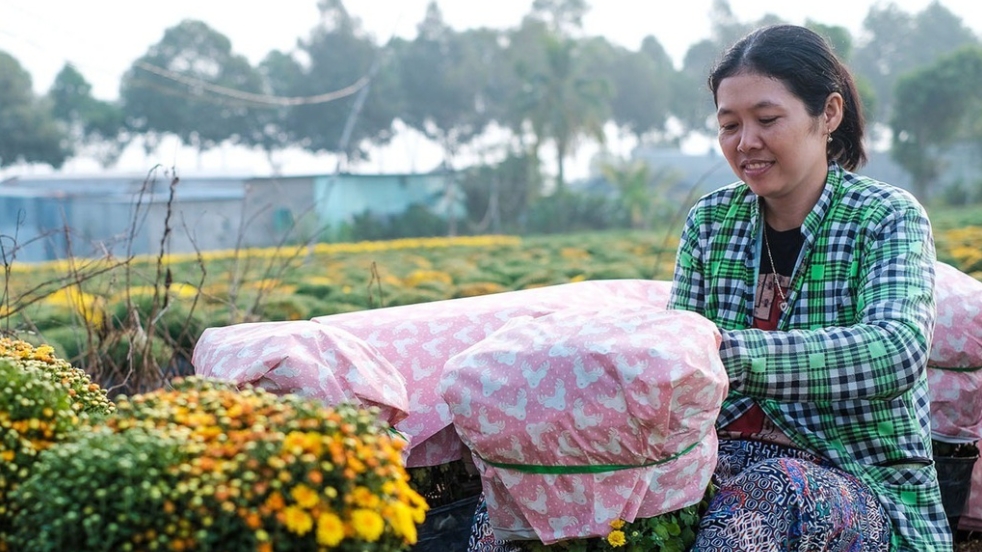 | Daisy blossoms glow Sa Dec village as Tet gets closer The vibrant yellow color of the raspberry-shaped daisy pots and the farmers' hustling works brings Tet closer to visitors in Sa Dec flower village (Dong ... |
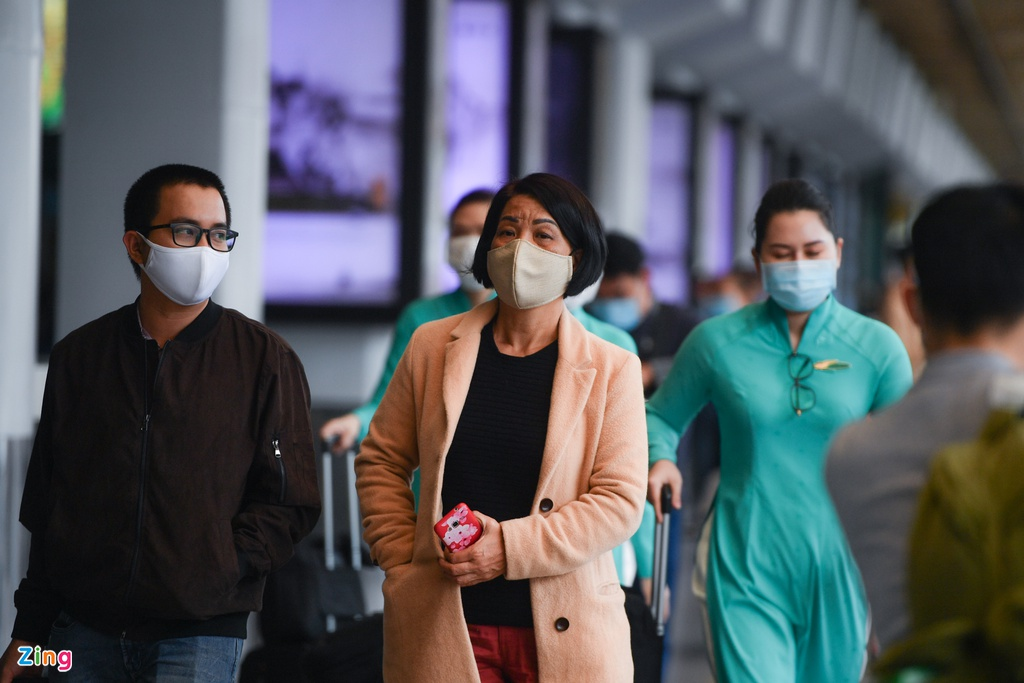 | Photo: Passengers leave Tan Son Nhat Airport for Tet holiday early over Covid-19 concern Fearing the increasingly complicated development of the Covid-19 pandemic, many people choose to return to their hometowns for Tet holiday one week earlier. |
Recommended
 Handbook
Handbook
Vietnam Moves Up 8 Places In World Happiness Index
 Handbook
Handbook
Travelling Vietnam Through French Artist's Children Book
 Multimedia
Multimedia
Vietnamese Turmeric Fish among Best Asian Dishes: TasteAtlas
 Handbook
Handbook
From Lost to Found: German Tourist Thanks Vietnamese Police for Returning His Bag
 Handbook
Handbook
Prediction and Resolution for the Disasters of Humanity
 Handbook
Handbook
16 French Films To Be Shown For Free During Tet Holiday In Vietnam
 Handbook
Handbook
Unique Cultural and Religious Activities to Welcome Year of the Snake
 Handbook
Handbook

